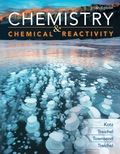
Chemistry & Chemical Reactivity
10th Edition
ISBN: 9781337670418
Author: Kotz
Publisher: Cengage
expand_more
expand_more
format_list_bulleted
Concept explainers
Textbook Question
Chapter 22, Problem 85IL
Two different coordination compounds containing one cobalt(III) ion, five ammonia molecules, one bromide ion, and one sulfate ion exist. The dark violet form (A) gives a precipitate upon addition of aqueous BaCl2. No reaction is seen upon addition of aqueous BaCl2 to the violet-red form (B). Suggest structures for these two compounds, and write a chemical equation for the reaction of (A) with aqueous BaCl2.
Expert Solution & Answer
Want to see the full answer?
Check out a sample textbook solution
Students have asked these similar questions
Using the appropriate bond energies, calculate the heat of reaction AH for the following reaction:
H-H + CI-CI
2 H-CI
You can find a table of bond energies by using the Data button on the ALEKS toolbar.
Round your answer to the nearest kJ/mol.
Note: For clarity, all lone pairs have been omitted from the molecular structures.
☐
kJ
mol
ค
000
Ar
B
Predict the hydrocarbon, of formula C6H10, needed to prepare the following geminal dibromide upon treatment with excess hydrobromic acid.
Note: The shown product is the only regioisomer formed in this reaction.
HBr
H₂C.
CH3
draw the major product formed with the listed reagents
Chapter 22 Solutions
Chemistry & Chemical Reactivity
Ch. 22.4 - (a) What is the formula of a complex ion composed...Ch. 22.4 - (a) Determine the metals oxidation number and...Ch. 22.4 - Name the following coordination compounds. (a)...Ch. 22.5 - What types of isomers are possible for the...Ch. 22.6 - Prob. 22.5CYUCh. 22.7 - Prob. 22.6CYUCh. 22.7 - Prob. 1.1ACPCh. 22.7 - Copper has a face-centered cubic unit cell. If...Ch. 22.7 - Prob. 1.3ACPCh. 22.7 - If a patient is given 10.0 mg of cisplatin, what...
Ch. 22.7 - Prob. 2.2ACPCh. 22.7 - How are the d electrons of Pt distributed in a...Ch. 22.7 - What are the electron configurations for Nd and...Ch. 22.7 - Prob. 3.2ACPCh. 22.7 - Prob. 3.3ACPCh. 22.7 - Prob. 3.4ACPCh. 22 - Identify, based on the position in the periodic...Ch. 22 - Prob. 2PSCh. 22 - Prob. 3PSCh. 22 - Prob. 4PSCh. 22 - Prob. 5PSCh. 22 - Iron is the most abundant transition element in...Ch. 22 - Prob. 7PSCh. 22 - Prob. 8PSCh. 22 - Prob. 9PSCh. 22 - Prob. 10PSCh. 22 - Identify a cation of a first series transition...Ch. 22 - Match up the isoelectronic ions on the following...Ch. 22 - The lanthanide contraction is given as an...Ch. 22 - Prob. 14PSCh. 22 - Prob. 15PSCh. 22 - Prob. 16PSCh. 22 - Prob. 17PSCh. 22 - Prob. 18PSCh. 22 - Which of the following ligands is expected to be...Ch. 22 - One of the following nitrogen compounds or ions is...Ch. 22 - Prob. 21PSCh. 22 - Prob. 22PSCh. 22 - Prob. 23PSCh. 22 - Prob. 24PSCh. 22 - Prob. 25PSCh. 22 - Prob. 26PSCh. 22 - Prob. 27PSCh. 22 - Prob. 28PSCh. 22 - Prob. 29PSCh. 22 - Prob. 30PSCh. 22 - Give the name or formula for each ion or compound,...Ch. 22 - Prob. 32PSCh. 22 - Prob. 33PSCh. 22 - Prob. 34PSCh. 22 - Prob. 35PSCh. 22 - Prob. 36PSCh. 22 - Prob. 37PSCh. 22 - Prob. 38PSCh. 22 - Prob. 39PSCh. 22 - Prob. 40PSCh. 22 - Prob. 41PSCh. 22 - Prob. 42PSCh. 22 - Prob. 43PSCh. 22 - Prob. 44PSCh. 22 - Prob. 45PSCh. 22 - Prob. 46PSCh. 22 - Prob. 47PSCh. 22 - Prob. 48PSCh. 22 - Prob. 49PSCh. 22 - Prob. 50PSCh. 22 - In water, the titanium(III) ion, [Ti(H2O)6]3+, has...Ch. 22 - Prob. 52PSCh. 22 - Prob. 53GQCh. 22 - Prob. 54GQCh. 22 - How many unpaired electrons are expected for...Ch. 22 - Prob. 56GQCh. 22 - Which of the following complex ions is (are)...Ch. 22 - Prob. 58GQCh. 22 - How many geometric isomers are possible for the...Ch. 22 - For a tetrahedral complex of a metal in the first...Ch. 22 - Prob. 61GQCh. 22 - Prob. 62GQCh. 22 - Prob. 63GQCh. 22 - A platinum-containing compound, known as Magnuss...Ch. 22 - Prob. 65GQCh. 22 - Prob. 66GQCh. 22 - Prob. 67GQCh. 22 - How many geometric isomers of the complex ion...Ch. 22 - Prob. 69GQCh. 22 - Prob. 70GQCh. 22 - Prob. 71GQCh. 22 - The square-planar complex Pt(en)Cl2 has chloride...Ch. 22 - The complex [Mn(H2O)6]2+ has five unpaired...Ch. 22 - Experiments show that K4[Cr(CN)6] is paramagnetic...Ch. 22 - Give a systematic name or the formula for the...Ch. 22 - When CrCI3 dissolves in water, three different...Ch. 22 - Prob. 77GQCh. 22 - The glycinate ion, H2NCH2CO2, formed by...Ch. 22 - Prob. 79GQCh. 22 - Nickel and palladium both form complexes of the...Ch. 22 - The transition metals form a class of compounds...Ch. 22 - Cerium, as noted in Applying Chemical Principles:...Ch. 22 - Prob. 84GQCh. 22 - Two different coordination compounds containing...Ch. 22 - Prob. 89SCQCh. 22 - Prob. 90SCQ
Knowledge Booster
Learn more about
Need a deep-dive on the concept behind this application? Look no further. Learn more about this topic, chemistry and related others by exploring similar questions and additional content below.Similar questions
- Propose Williamson ether syntheses for the following compoundsarrow_forwardIdentify all functional groupsarrow_forwardA mixture of CaCO3 and MgC2O4 of unknown mass was heated in a 0.5 L closed rigid vessel to 900 degrees C.at 400C the following reaction occurs:MgC2O4 -> MgO (s) + CO (g) + CO2 (g)At 700C a second reaction occurs: CaCO3 -> CaO (s) + CO2 (g)The solid mass in the vessel was measured to be 3.06 g at 400C and 2.03g at 900CQuestion: What is the partial pressure of CO in both temperatures? (400 and 900C), provide detailed explanation.arrow_forward
- For the following alkyne, complete the reaction sequentially (that is draw the intermediate that we can’t stop at) and then name (complete name) all 3 molecules.arrow_forwardGiven the reaction sequence below, answer the following. A. Provide the structure for A. B. Provide the structure for B (pay attention to stereochemistry). C. Provide the structure for C. D. What are the stereochemical designations for I and II (R/S)?arrow_forwardWhich of the following is the most stable carbon radical?arrow_forward
- Put the following carbon radicals in order of increasing stability.arrow_forwardDraw the major organic product for each of the following reactions (pay attention to stereochemistry).arrow_forwardThere are 2 reactions (that you know of) to achieve the following transformation: One reaction is favored over the other because it avoids a competing reaction. A. Draw the favored reaction scheme (not the mechanism), be sure to include all necessary reagents. B. Draw the reaction scheme that is not favored and include all the possible products.arrow_forward
- Both carbocations and carbon-radicals have trigonal planar geometry. True or Falsearrow_forwardTeflon (polytetrafluoroethene) is prepared via the radial polymerization of tetrafluoroethene. What other reaction conditions (reagent, etc.) are needed to accomplish this? A. NBS, Light B. Heat, Cl2 C. Peroxide, Heat D. H2SO4, H2O, Heatarrow_forwardWhich of the following compounds can be reacted with ethene to prepare 1,1- dichlorocyclopropane? A. CCl4 B. CCl2 C. CHCl3 D. CH2Cl2arrow_forward
arrow_back_ios
SEE MORE QUESTIONS
arrow_forward_ios
Recommended textbooks for you
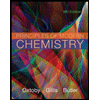 Principles of Modern ChemistryChemistryISBN:9781305079113Author:David W. Oxtoby, H. Pat Gillis, Laurie J. ButlerPublisher:Cengage Learning
Principles of Modern ChemistryChemistryISBN:9781305079113Author:David W. Oxtoby, H. Pat Gillis, Laurie J. ButlerPublisher:Cengage Learning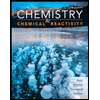 Chemistry & Chemical ReactivityChemistryISBN:9781337399074Author:John C. Kotz, Paul M. Treichel, John Townsend, David TreichelPublisher:Cengage Learning
Chemistry & Chemical ReactivityChemistryISBN:9781337399074Author:John C. Kotz, Paul M. Treichel, John Townsend, David TreichelPublisher:Cengage Learning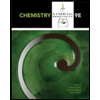 Chemistry & Chemical ReactivityChemistryISBN:9781133949640Author:John C. Kotz, Paul M. Treichel, John Townsend, David TreichelPublisher:Cengage Learning
Chemistry & Chemical ReactivityChemistryISBN:9781133949640Author:John C. Kotz, Paul M. Treichel, John Townsend, David TreichelPublisher:Cengage Learning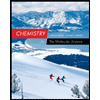 Chemistry: The Molecular ScienceChemistryISBN:9781285199047Author:John W. Moore, Conrad L. StanitskiPublisher:Cengage Learning
Chemistry: The Molecular ScienceChemistryISBN:9781285199047Author:John W. Moore, Conrad L. StanitskiPublisher:Cengage Learning ChemistryChemistryISBN:9781305957404Author:Steven S. Zumdahl, Susan A. Zumdahl, Donald J. DeCostePublisher:Cengage Learning
ChemistryChemistryISBN:9781305957404Author:Steven S. Zumdahl, Susan A. Zumdahl, Donald J. DeCostePublisher:Cengage Learning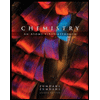 Chemistry: An Atoms First ApproachChemistryISBN:9781305079243Author:Steven S. Zumdahl, Susan A. ZumdahlPublisher:Cengage Learning
Chemistry: An Atoms First ApproachChemistryISBN:9781305079243Author:Steven S. Zumdahl, Susan A. ZumdahlPublisher:Cengage Learning

Principles of Modern Chemistry
Chemistry
ISBN:9781305079113
Author:David W. Oxtoby, H. Pat Gillis, Laurie J. Butler
Publisher:Cengage Learning

Chemistry & Chemical Reactivity
Chemistry
ISBN:9781337399074
Author:John C. Kotz, Paul M. Treichel, John Townsend, David Treichel
Publisher:Cengage Learning

Chemistry & Chemical Reactivity
Chemistry
ISBN:9781133949640
Author:John C. Kotz, Paul M. Treichel, John Townsend, David Treichel
Publisher:Cengage Learning

Chemistry: The Molecular Science
Chemistry
ISBN:9781285199047
Author:John W. Moore, Conrad L. Stanitski
Publisher:Cengage Learning

Chemistry
Chemistry
ISBN:9781305957404
Author:Steven S. Zumdahl, Susan A. Zumdahl, Donald J. DeCoste
Publisher:Cengage Learning

Chemistry: An Atoms First Approach
Chemistry
ISBN:9781305079243
Author:Steven S. Zumdahl, Susan A. Zumdahl
Publisher:Cengage Learning
The Bohr Model of the atom and Atomic Emission Spectra: Atomic Structure tutorial | Crash Chemistry; Author: Crash Chemistry Academy;https://www.youtube.com/watch?v=apuWi_Fbtys;License: Standard YouTube License, CC-BY